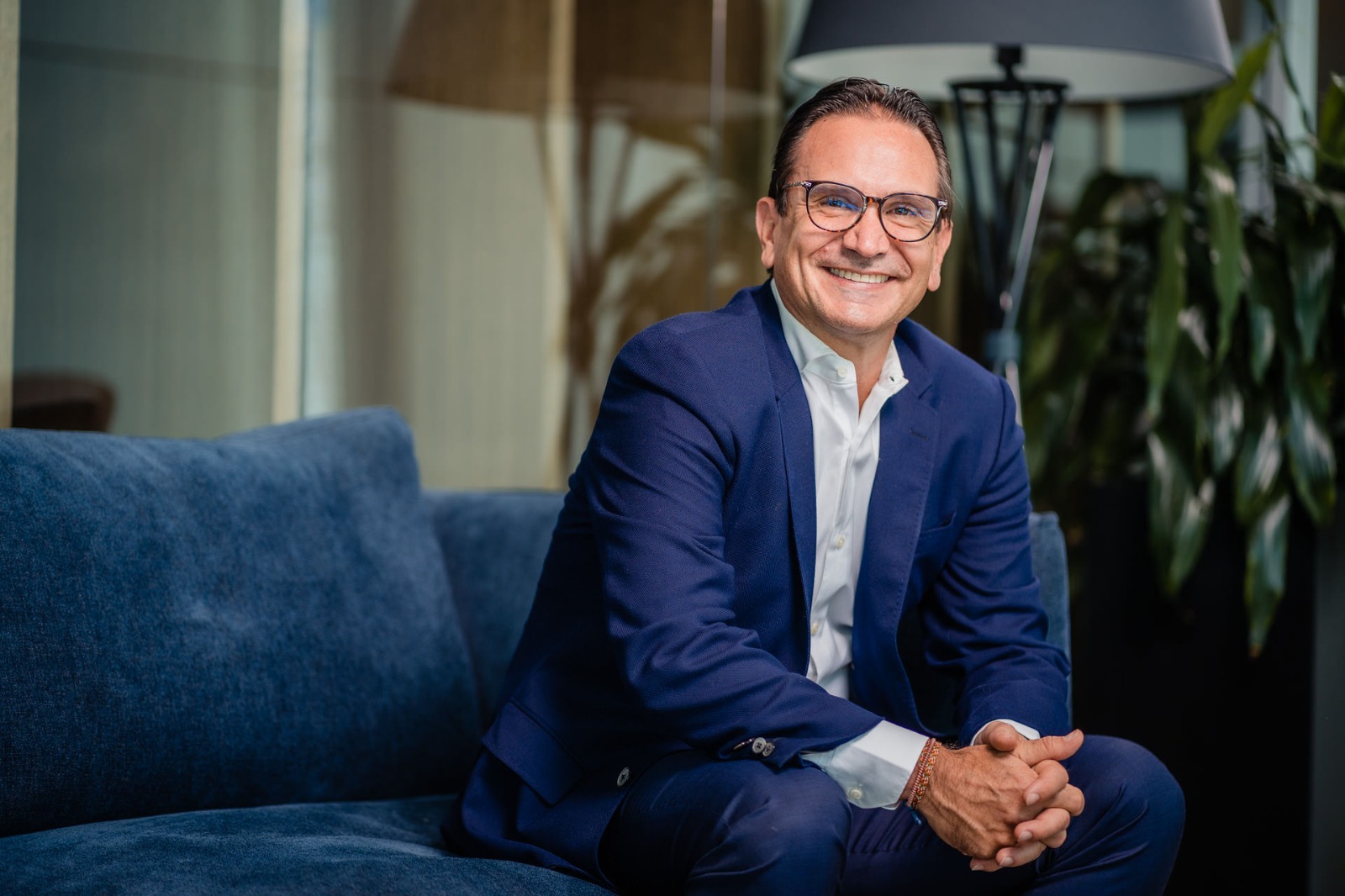Bancolombia's 3 major challenges after turning 150: interview with Juan Carlos Mora

Delving into the history of one of the country's most emblematic financial institutions to try to define those milestones that have marked its trajectory is not easy, even less so when this requires rewinding the 'film' 150 years, that is, to January 29, 1875, when the doors of the first branch of Banco de Colombia (today Bancolombia) were opened in Medellín (Antioquia), almost half a century before the creation of Banco de la República itself.
From then on, the history of one of the largest banking institutions in the country began to be written, which today has more than 30 million clients, 30,000 collaborators, assets of over 353 billion pesos and a portfolio balance of 270 billion, as shown in its consolidated balance sheet.
Juan Carlos Mora has been at the head of the entity since May 1, 2016, but his career within the organization spans more than three decades. He began as a credit analyst, but rose to the presidency of the bank that is now present in El Salvador, Guatemala, the United States and Panama, in the latter since 1973, when its internationalization process began.
About that century and measure, in which Bancolombia has also accompanied the development of the country, its president spoke with EL TIEMPO about other milestones and this is what he told us:
What are the three most important milestones of the bank in these 15 decades? There are many, but I would say that the first and most important is that we transformed history by opening our first physical branch in 1875 in Medellín. The second, without a doubt, has been innovating solutions, based on understanding what our clients need. For example, in 1969 we delivered the first credit card in Colombia, in 1975 we installed the first ATM, in 2006 we opened the first banking correspondent in Chipatá (Santander), today there are more than 28,200 in nearly 1,100 Colombian municipalities. And the third milestone, I think it should be noted, is that we were the first Colombian company to be listed on the New York Stock Exchange in 1995. Every step we take, every goal we reach, is a reason for celebration. Our more than 30 million clients in Colombia, Panama, El Salvador and Guatemala attest to this.

Juan Carlos Mora, President of Bancolombia since May 1, 2016. Photo: Bancolombia
Throughout history, we have grown hand in hand with our clients, with technological innovation, new businesses and structures. We have been pioneers in various areas, setting milestones in Colombian and Latin American banking. For 150 years, our mission has been the same: to be a driver of growth, employment and development, a goal that we have achieved by being that reliable and close financial ally that accompanies people, entrepreneurs and large companies in every step of their journey. Thanks to them, today we are much more than a bank: we are a group that offers solutions to promote sustainable development for the well-being of all.
Throughout our history we have been pioneers on many fronts, and today we continue to innovate with the same spirit of opening doors and connecting dots. We are proud of what we have achieved, but we are also aware of the responsibility that this entails. Each challenge drives us to improve, to continue being a close, human and purposeful bank. And, with our eyes set on the future, we continue to build tomorrow together with our clients, employees and allies.

The Savings and Housing Corporation (Conavi) was created in 1974 to provide mortgage loans. Photo: Bancolombia
We have faced many crises, but our adaptation, resilience and innovation have made us stronger. Our key learning has been to listen, evolve and maintain a commitment to our customers, who drive our growth. In times of uncertainty, we understand their needs and adapt products and services to support them. Each crisis has been an opportunity to improve, and we have come out ahead thanks to our long-term vision and solid values. In this way, we have consolidated ourselves as a strong, reliable and approachable bank, ready for the future.
52 years ago the bank decided to take a step towards internationalisation. What has that experience been like? There is no doubt that today we are a regional bank with an international presence. We began our expansion in 1973 with the opening of the first office in Panama, and since then we have taken strategic steps to strengthen our presence in Latin America and the United States. There have been many milestones that have accompanied us on this path: 30 years ago (1995), through Banco Industrial Colombiano (BIC), we became the first Colombian company to be listed on the New York Stock Exchange (NYSE), by listing a Level III ADR in that market. In 2008, we acquired the entirety of Bancoagrícola, in El Salvador, which marked the beginning of our foray into Central America. In 2012, we purchased 60 percent of the stake in Banco Agromercantil of Guatemala, expanding our presence in that region. Added to this was the acquisition in 2013 of the HSBC subsidiary in Panama, today Banistmo, consolidating our position. And recently, in 2022, we launched Bancolombia Capital in the United States, which has been fundamental to strengthen our presence and investment business in the North American market.
This process has been a constant commitment to adapt to the needs of each geography, strengthen ties with the communities we serve, offer a portfolio aligned with their needs, and be their right hand in building a future full of progress and well-being.
Every crisis has been an opportunity to improve, and we have overcome it thanks to our long-term vision and strong values.
The pandemic was a key catalyst to accelerate the technological transformation of the financial system. Although the sector was already moving in that direction, the context of the crisis forced us to adapt much more quickly and thoroughly. Social isolation, mobility restrictions and the need to keep services operational caused both financial institutions and customers to immerse themselves in the use of digital solutions on a massive scale, which allowed us to advance by leaps and bounds. We already had Nequi and that was a very valuable point. Today, through this platform, we have surpassed 20 million customers, which demonstrates its relevance in the digital relationship between people and money.
Had it not been for the pandemic, the transformation would have been much more gradual in terms of the adoption of technologies such as digital banking, instant payments and the integration of payment systems, among other issues.

Nequi currently has more than 20 million customers. Photo:
With the arrival of the keys, we seek to facilitate the financial experience, eliminating the need to memorize long account numbers. Thanks to this initiative, clients of Bancolombia, Nequi and other entities in the financial sector can transfer money instantly, free of charge and without complications, only using personal information such as their ID number, email, cell phone number or an alphanumeric key. Together with other initiatives in the sector, such as payments with interoperable QR codes, this step allows us to move towards a more agile, flexible and people-friendly financial system.
At Bancolombia, we support the implementation of regulatory frameworks that promote financial inclusion and empower users. We believe that open data and open finance have the potential to significantly transform the financial industry by facilitating more personalized services tailored to people's needs.

Today, Colombian consumers have more technological options to replace cash. Photo: iStock
A few months ago we requested approval for the creation of a parent company to be called Grupo Cibest, which will be the sole shareholder of Bancolombia and of the financial and non-financial businesses that are now part of the Group, those that have put us at the forefront. We continue to advance in various procedures before regulators and shareholders, we are on the right track and we hope to obtain the necessary approvals in the coming months to consolidate the process.
What challenges lie ahead, at least for the next decade? In the coming years, banking will face significant challenges that will push us to continue evolving to be closer to people and contribute to the well-being of all. In this process, digital transformation will be one of the great drivers of this change. Technological advances, such as artificial intelligence and blockchain, will allow us to offer more agile, personalized and secure services, but they will also bring us new challenges, such as cybersecurity, to protect customer trust and their information.
Another significant challenge will be to ensure that our services reach more people, especially those who do not yet have access to the financial system. To this end, we are committed to offering solutions that allow everyone, regardless of their situation, to access tools that allow them to improve their quality of life and access an infinite universe of opportunities.
At the same time, the banking sector will have to adapt to new regulations that require us to be more responsible and sustainable, so that beyond mobilizing successful economic results, we promote the well-being of people, the preservation of the environment and a future full of opportunities.
eltiempo






